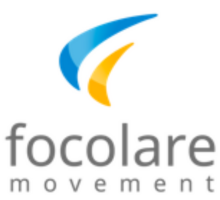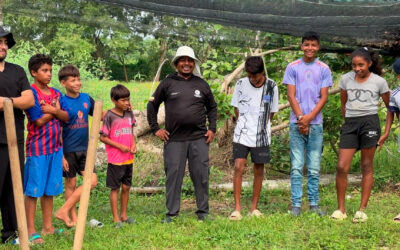
(C) Maria Cristina Criscola
“For me art means reaching out to the mystery,”said Maria Cristina Criscola in a recent interview. She continued: “I’ve never chosen a model for my style. . . I try to be rigorous about the technique. But at the same time, I try to explore ‘stripping away’ so as to reach the deepest core of each. . .” With these words this Argentine artist tries to describe her years of work in the field of art which has not been only human-artistic, but spiritual. Her works are the accompaniament to this journey in search of the light.
This is affirmed also by Dr. Claudio Villareal, curator of an exhibit that brings together pieces of Criscola’s work from 1978 to 2012 and is entitled “Encountering the eternal in the tides of futility”. “It’s presence and stripping away at the same time. It’s the spirit of the material.” In front of her work “silence is quite apt” as Rothko would say. The grand dimensions of her canvases place one in contact with this ALL that lives in all that is. With this spirit that prevails, which is the quality of the material to which it gives form, by setting it free in the light. The colours are more than a means, more than symbols.”
Maria Cristina Criscola was born in Buenos Aires in 1943. In the 1970’s she attended several art academies (Manuel Belgrano, Prilidiano Pueyrredón, Ernesto de la Cárcova) and finished as a professor of Painting with a specialization in mural painting. Since 2007 she has been a professor and, for ten of those years, director of the Manuel Belgrano Fine Arts Academy. In 1989 she completed a PhD thesis entitled Colore, Forma e Contenuto.

© CSC – Maria Cristina Criscola
This was followed by many exhibits in Argentina and in other countries. For a long time she worked at Centro Ave Arte (Ave Art Center) in Loppiano, Italy, where she worked on several window and door projects for churches. But it was above all an opportunity to work with other artists for an art inspired by the light of the spirituality of unity. The crowning of this experience was the completion of the main door of the diocesan shrine to Maria Theotokos (Mother of God) in Loppiano. Criscola also has her studio in Mariapolis Liain O’Higgins, Buenos Aires where she says one can experience creating “from a quiet place, from that absolute place where everything dwells.” She understands art as a form of knowledge and of communication, even more a form of communion.
The exhibit of her complete works is open until 7 October 2012 at Berazafegui (Buenos Aires, Argentina).




0 Comments